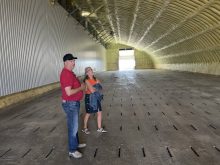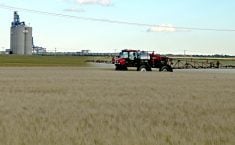Beef producers keep trying to give money to Sam Rhode.
The Livelong, Sask., cattle producer is president of the Canadian Organic Livestock Association, or COLA.
He’s being flooded with calls from beef producers who want to join the association to get in on the potentially lucrative organic beef market.
“We didn’t ask for any more members, and we said we won’t take any more, but they send the money anyway,” Rhode said in a recent interview. “They want to be first in line.”
Read Also

New coal mine proposal met with old concerns
A smaller version of the previously rejected Grassy Mountain coal mine project in Crowsnest Pass is back on the table, and the Livingstone Landowners Group continues to voice concerns about the environmental risks.
If all goes according to plan, this winter the association will find a U.S. buyer for its members’ beef, set up a couple of certified-organic finishing stations and will be in the process of setting up a new generation co-operative to handle its business.
“There’s not a question in my mind it’s going to happen,” said Rhode, adding he’s positive that the calf crop produced by members last spring will be “sold organic” in January or February.
The association, founded in 1997, has 25 members, including 24 from Saskatchewan and one from Alberta.
A recent study of organic beef production by Saskatoon consultant Rick Koller found there are 29 certified organic herds in Western Canada. Those herds produce 1,000 head of cattle for slaughter and sale as organic beef. It also said another 150 herds with 4,500 head have the potential to be certified organic.
“Once the industry begins to grow, I think it has some excellent opportunities, if you can assure quality and consistency of supply to the markets around the world,” Koller said.
He found that retail stores were anxious to sell organic beef, but were hesitant to feature it because they couldn’t be assured of consistent supplies.
Premiums worthwhile
The study, which examined the costs and returns from organic beef production, concluded that despite significantly higher costs of production, the premiums available in the marketplace are such that it can still be a money-making venture.
“The added returns for organic producers who finish their animals are estimated to be 13 to 31 percent above conventional beef, provided the finisher works closely with the rest of the food chain,” it said.
Koller said the key to success is for organic producers to take as much control of the production, processing and marketing as possible.
He thinks COLA’s plan to set up a new generation co-operative, with two or three centralized finishing stations or feedlots, is the way to go.
“At least then they can concentrate the animals in one location and concentrate their efforts on feed distribution and gain economies of scale through cattle assembly and feeding,” he said.
Rhode said creating a new generation co-op will be crucial, because it’s an ideal way to assure consistent supply.
But before that happens, a buyer must be found. The association is focussing its efforts south of the border, where the demand for organic beef is greater than in Canada. Rhode said the group is “very, very close” to a marketing deal with a U.S. buyer.
At its current size, the association’s ambitions are limited by the fact that it can guarantee only about 1,000 animals a year. But once a marketing deal can be reached, things will take off.
“I know that will go to two, three, five and 10,000 almost right away,” said Rhode. “Then we’ll need more producers and we start looking to Alberta, B.C. and Manitoba.”
Organic beef production requires that the mother cow receive organic feed for at least the last two thirds of its gestation period. All feed and bedding for the calf must come from land free of chemicals and fertilizers for at least three years. No drugs can be administered except the live virus of vaccines designed to stimulate the immune system against diseases such as blackleg.
Balancing act
It takes about six weeks longer to finish an animal organically than in conventional production. Feed costs are higher, but that is balanced by savings in veterinarian bills and higher returns. And the more producers can control the processing and marketing system, the bigger slice of the retail price they’ll be able to pocket for themselves.
















